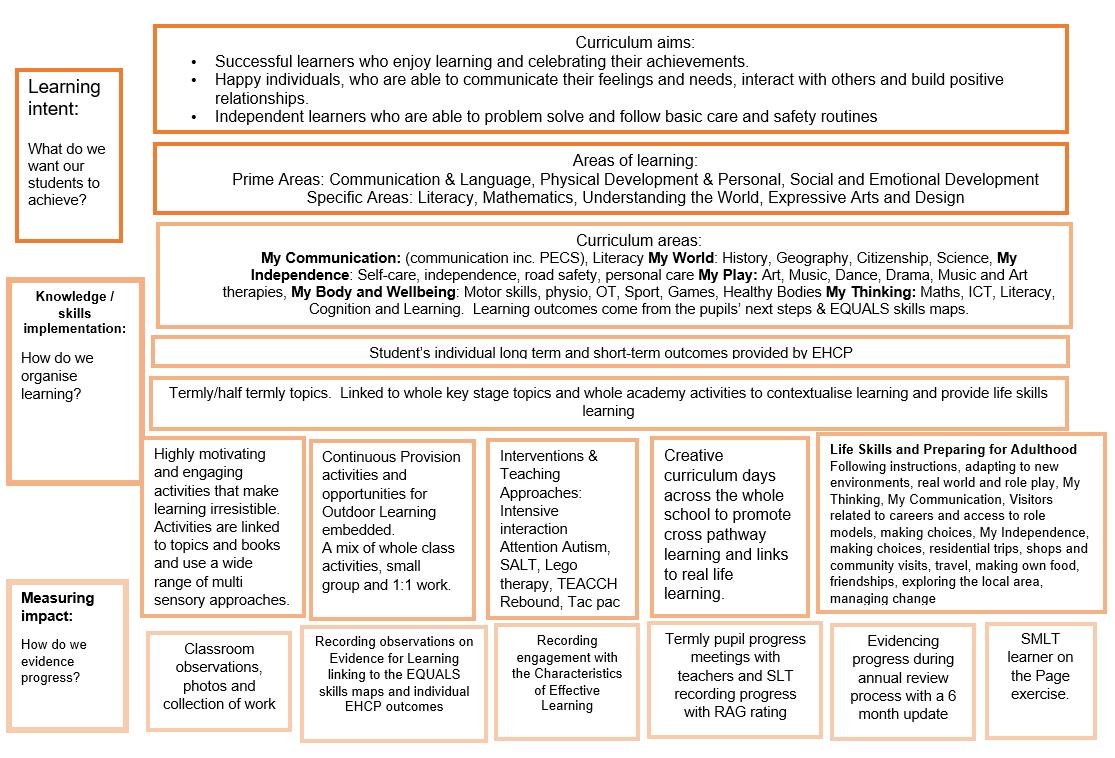

Orange EYFS Curriculum
Early Years learning at Highfield Littleport Academy









How do we identify students for the Orange pathway?
• The Early Years Foundation Stage (EYFS) Statutory Framework sets the standards that all early years providers must meet to ensure children are learning and developing well and are kept healthy and safe. All students attending Highfield Littleport Academy will follow this framework until they reach KS1 age. They will then move onto one of our other Pathways based on teacher observation and assessment. Should a child excel within the Equals framework teachers will use their professional judgement to challenge them on their appropriate learning pathway.
• A child's early experiences have a major impact on their future life chances and high quality early learning helps to provide the right foundation for good future progress.
• Development is not a linear or automatic process, it depends on each unique child having opportunities to interact in positive relationships and enabling environments.
• At Highfield Littleport we ensure that the child is central to our assessment and planning process so that next steps are exciting and will inform new learning opportunities.
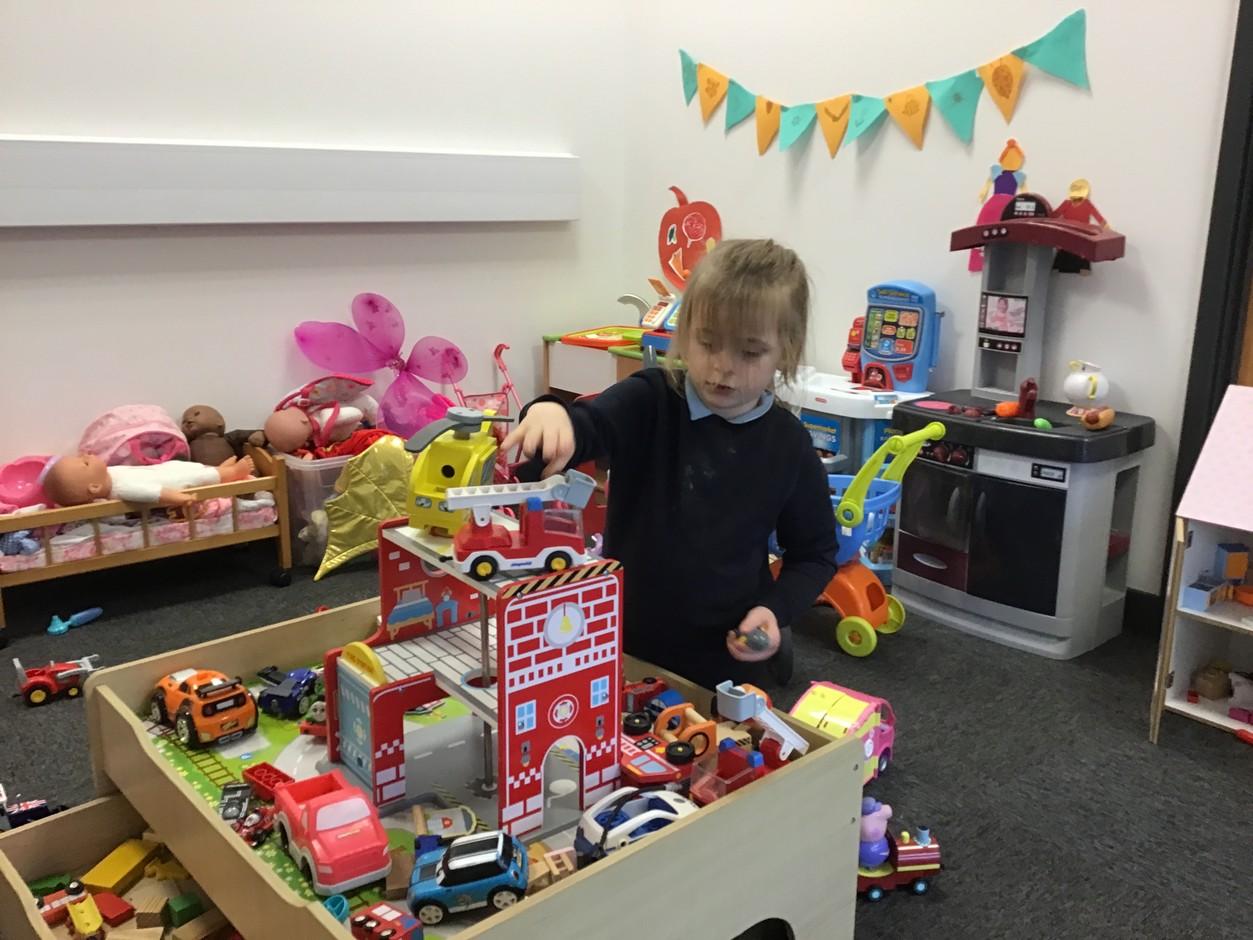








Principles which shape our Early Years practice
(taken from EYFS statutory framework)
• Every child is a unique child who is constantly learning and can be resilient, capable, confident and self assured.
• Children develop their strength and independence through positive relationships
• Children learn and develop well in enabling environments with teaching and support from adults who respond to their individual interests and needs and help them to build their learning over time.
• We recognise the importance of learning and development. Children develop and learn at different rates.
Holistic development and learning
Enabling environments foster holistic approaches to early development and learning, recognising that different aspects are constantly connected in a child’s experiences. In the EYFS, areas are described separately in order to break down the complexity of development and learning, but it is important to keep the whole child in mind. As a child encounters objects, events and other people, all spheres of development and learning are in action at the same time.
We use a series of skills maps (created by Equals) alongside Evidence for learning software to ensure that learning and planning for next steps is unique and personal to each child in the EYFS. These encompass the transition from the Early Years Foundation Stage Curriculum through to Key Stage 1 where students will continue their learning on different pathways according to their unique learning style.









Core learning areas in the Orange Pathway
Prime EYFS framework Areas
Communication and Language Physical Development Personal, Social and Emotional Development
Specific EYFS framework Areas
Literacy Maths Understanding the World Expressive Arts and Design
Below we can see how the Orange Pathway curriculum links to the EYFS Prime and Specific Areas of Learning and Development.
My Communication & Language – Communication (including PECS), Reading and Writing incorporates the Communication and Language prime area
My Personal Social and Emotional Development – Independence– Self-help, independent travel skills, self-care, staying safe, PSHE & Citizenship incorporates the Personal, Social and Emotional Development prime area
My Physical Development– Motor skills, Physiotherapy, Occupational Therapy, Sport, Games, Swimming, Healthy Bodies incorporates the Physical Development prime area
Cognition and Learning and EYFS Characteristics of Effective Learning
My Thinking – Numeracy, Cognition and Learning, ICT and Literacy incorporates Literacy and Mathematics specific areas
My World – Exploring the world, History, Geography, Citizenship and Science incorporates the Understanding of the World specific areas
My Play - Art, Music, Dance, Drama, Arts Therapies and Music Therapies incorporates the Expressive Arts and Design specific areas








The Orange Pathway within whole school learning and the wider academy
Areas of learning are broadly similar in EYFS to each of the other pathways but there are differentiated next steps within each pathway.
Orange Pathway learning is a precursor to the pathways above.







Orange Pathway Planning – Identifying Next Steps
• Learning in the Orange pathway is highly individualised and each student has their EHCP targets at the centre of their journey running alongside the skills maps framework. The aim is to develop independence in each are of learning to prepare students for adulthood.
• The curriculum is underpinned by the Early Years Foundation Stage which sets out learning experiences in each of the prime and specific areas of learning. Learning is delivered through a topic based approach with themes that engage student’s interests and makes learning irresistible.

• There are 6 half termly themes each year Animal Kingdom, My Imagination, Around the World, People and Communities, Plants and the Environment and Past, Present and Future. These topics are adapted in accordance to student’s interests. Topics are flexible and in some circumstances may be moved and adapted throughout the year in response to students current interests as this will have the biggest impact on promoting engagement in learning.
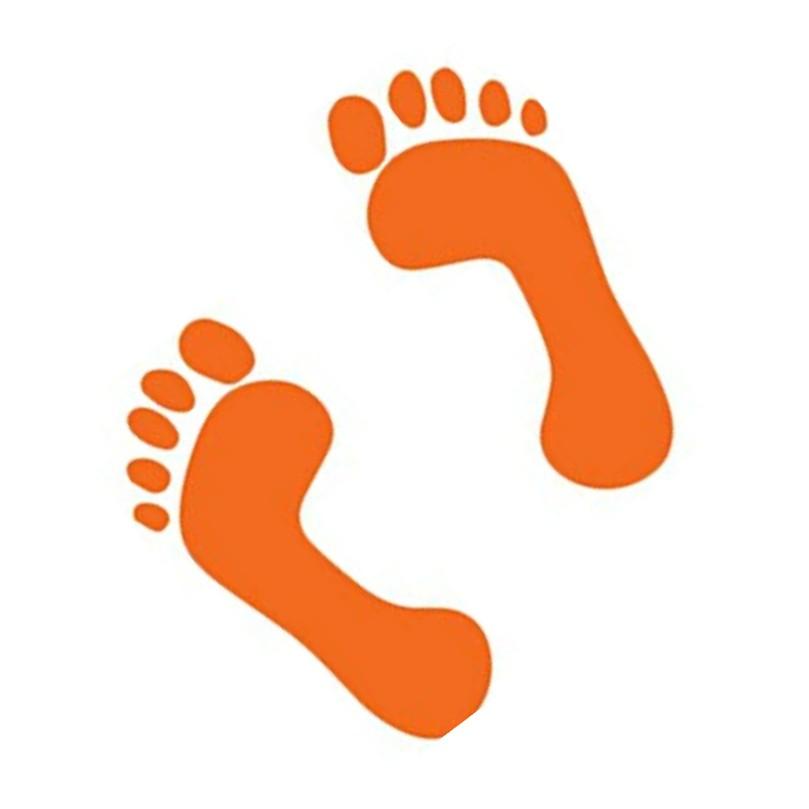







Orange Pathway Teaching Approaches
• Music Box – Music Box is a developmental music based group activity. Students learn to accompany songs, follow instructions, develop joint attention and respond to familiar routines whilst developing social and interaction skills.



• Attention Autism – Attention Autism is an intervention model designed by Gina Davies, Specialist Speech and Language Therapist. It aims to develop natural and spontaneous communication through the use of visually based and highly motivating activities.
• Intensive Interaction – This teaches and develops the fundamentals of communication, attainments such as use and understanding of eye contact, facial expression, vocalisation leading to speech and taking turns in conversational exchanges.
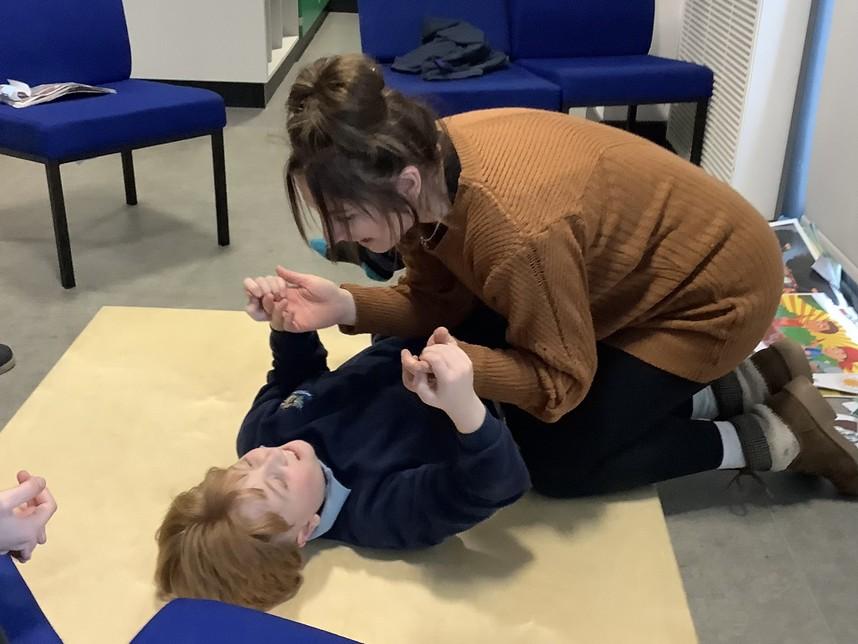







Orange Pathway Teaching Approaches
• Sensology - Sensology’s aims are to wake up the five basic senses (Vision, hearing, touch, smell, taste) and also movement related sensory systems: the vestibular (balance, head movements and gravity) and the proprioceptive (body positions, body mapping and planning movements). The senses are stimulated and introduced individually and a familiar song/rhyme is used to cue in the session as well as children looking at themselves in a mirror.
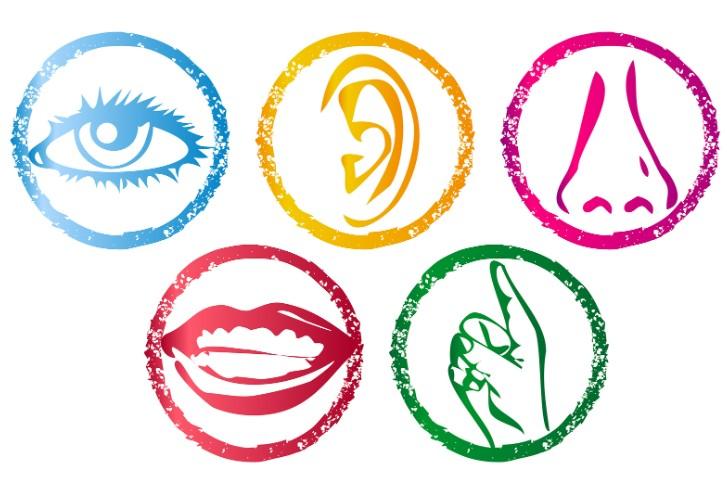

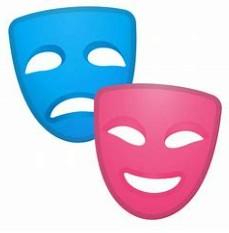
Sensory Drama - Each sensory drama session allows children to immerse themselves in a multisensory story experience through music, movement, communication, touch, taste and smells. Sensory drama allows opportunities for: Creating a fun and exciting environment which the children choose to participate in, Interaction and communication, Learning through experience.
Learning opportunities are fortified in every moment of the day including lessons, playtimes, snack and lunchtime, and trips out in the community including journey time. Social opportunities are maximised and there is a broad exposure to the world around them preparing students for adulthood.







Orange Pathway Assessment
• Staff assess learning styles and engagement through observing and engaging with the children. They then create written and photographic evidence.
• This evidence is recorded through an electronic system called Evidence for Learning which enables staff to simultaneously assess against individual EHCP targets and the skills maps to use a formative assessment cycle to plan for next steps.
• Observations are recorded in the key early skills and/or experiences in each of the Prime areas of learning, as well as the Cognition and Learning and EYFS Characteristics. These observations help staff to see individual learning styles and plan stimulating and engaging activities.

• This process allows staff to identify what’s going well and highlight areas where extra support may be needed providing early interventions.
• Students independence in each area is assessed as they move towards mastery of each skill.
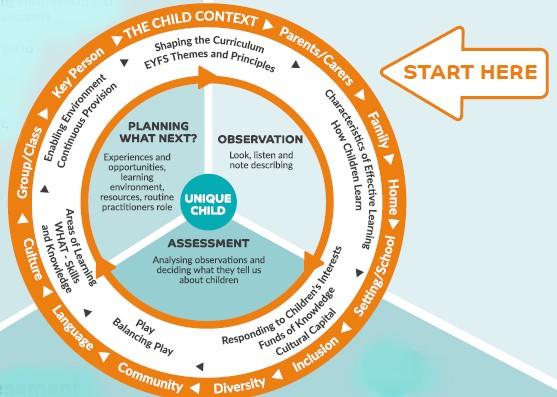









Learning Values and Behaviours
• Our ethos of preparing students for the next step is underpinned by our six key learning values. Each area encompasses qualities we nurture and develop in our students on a daily basis.
• Kindness, Independence, Resilience, Thinking, Creativity, and Team Work.
• All of these qualities are utilised in every day life. Through our teaching and learning we identify and practise these values so that students can recognise and are able to apply them when they leave Highfield.
• Each value has an associated character to aid recognition and association.
• In Early Years we use puppets and pictures to represent each of the learning value characters.
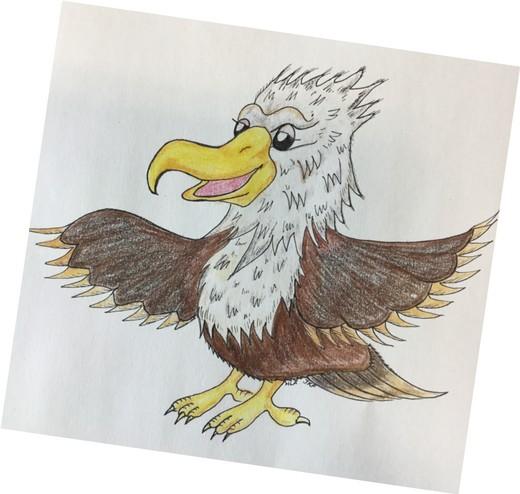
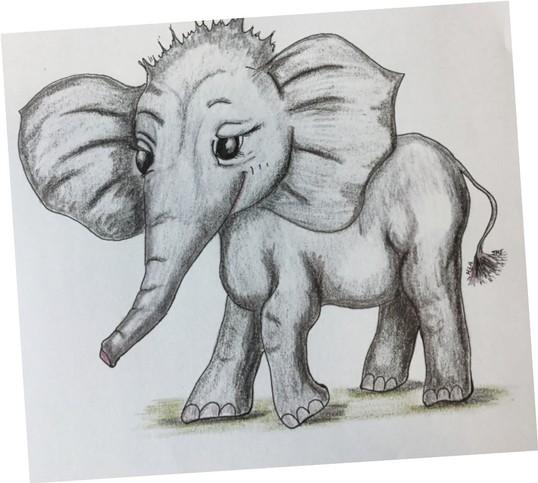
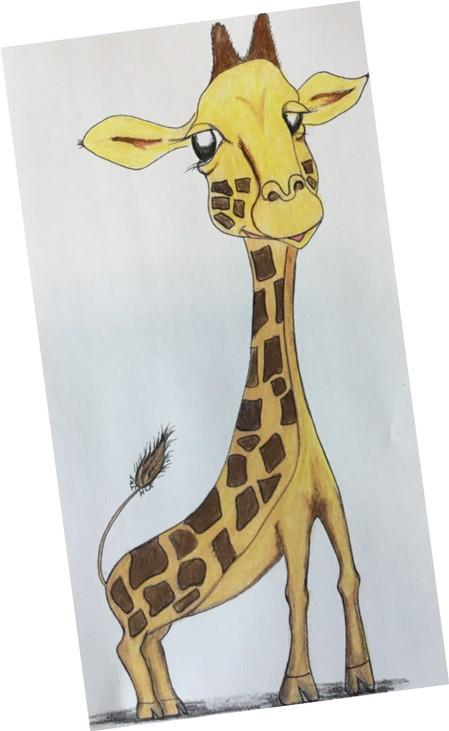
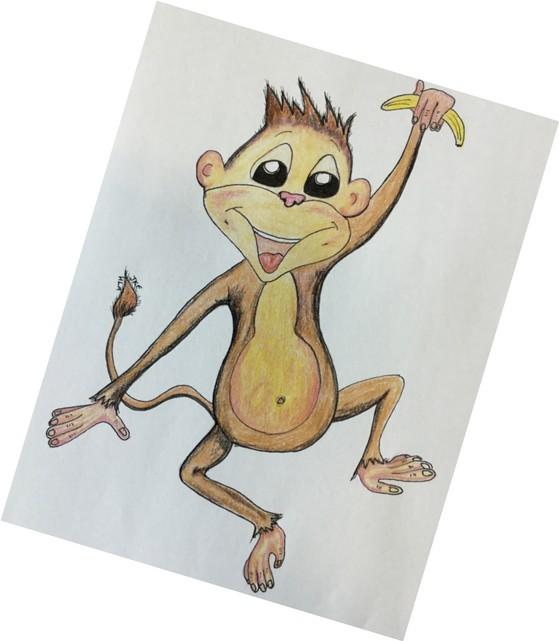
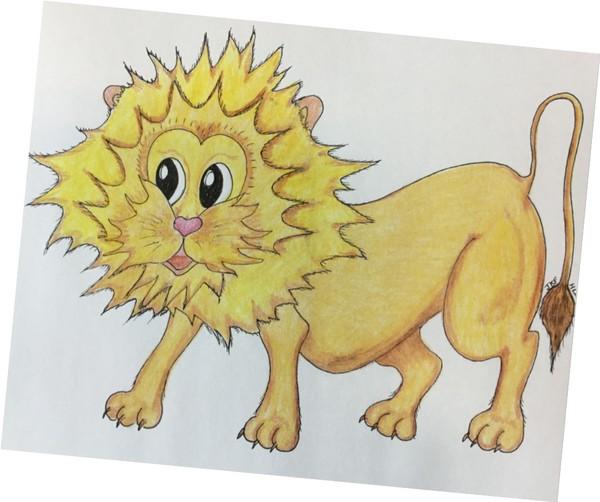
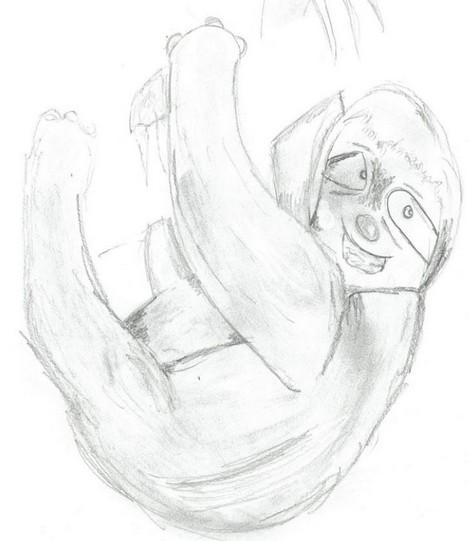







Orange Pathway End Points and Transition
When students enter the school between early years and Key Stage 1 they learn according to the Early Years Foundation Stage on the Orange Pathway.
The developmental approach establishes a students learning style, abilities and social interaction skills. This information cumulatively helps staff identify which pathway is most appropriate for students to continue their learning as they progress through their schooling at Highfield.

Students are exposed to a variety of different learning styles (formal, semiformal and pre-formal) to judge which approach is best for each learner. This information then formulates the students learning pathway. Teachers make a professional judgement based upon their detailed observations to and assessments to decide this.









